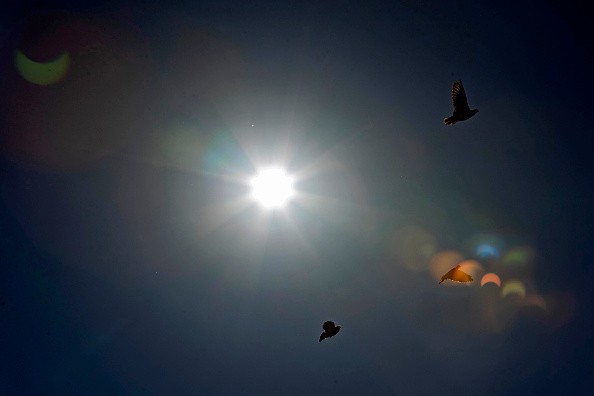The sun's canyon-like coronal hole is expected to emit solar flares that have high-speed levels.

But people don't have to worry since the solar storm will not create major geomagnetic storms.
SpaceWeather.Com, a publishing agency focusing on solar flares, auroras, and near-Earth asteroids, said it would only be a G1-class solar flare.
Although weak, this minor geomagnetic storm can still affect satellites and power grids.
Sun's Canyon-Like Coronal Hole to Emit Solar Flare
According to Live Science's latest report, the coronal hole will send solar wind that could hit Earth's magnetic field from Dec. 1 to Dec. 2.

Of course, Aurora lights will appear around the Arctic Circle.
Once the solar storm hits Earth, astronomers said that GPS systems and mobile devices might be interrupted.
They added that the geomagnetic storm that will arrive in December is just one of the many solar storms that will soon hit the planet.
This is because the sun is already entering the most active phase of its 11-year solar cycle.
Fun Facts About Solar Flares
Space Answers provided some fun facts about solar flares. These include the following:
- When it comes to power, a solar flare can release ten million times more energy than a volcano.
- Multiple solar flares can be emitted by the sun in just a day. During its peak, the solar system's central space body can eject more than 20 solar storms per day.
- Solar storms can have high speeds. Ultra-fast ones can reach Earth in just two days.
- Solar flares can be quite powerful. In 1989, a huge solar storm was able to cause a major outage in a Quebec-based power grid.
- Solar flares can reach ultra-high temperatures. Most of them are as hot as the sun's core.
If you want to learn more about solar flares, you can visit this link.
Numerous solar flares have already happened in the past months.
In January, a mid-level solar flare was captured by NASA.
In February, a G2-class solar flare was detected by NOAA's forecast model tech.
For more news updates about solar flares and other space objects, keep your tabs open here at TechTimes.
![Apple Watch Series 10 [GPS 42mm]](https://d.techtimes.com/en/full/453899/apple-watch-series-10-gps-42mm.jpg?w=184&h=103&f=9fb3c2ea2db928c663d1d2eadbcb3e52)



